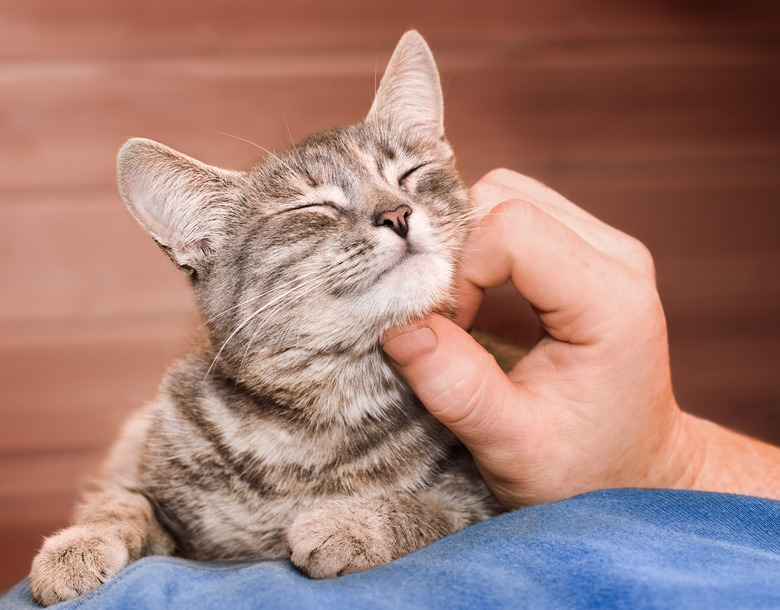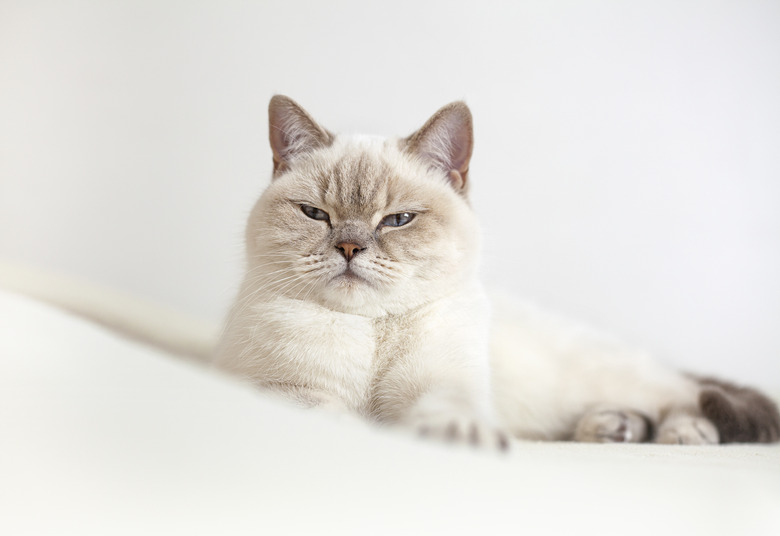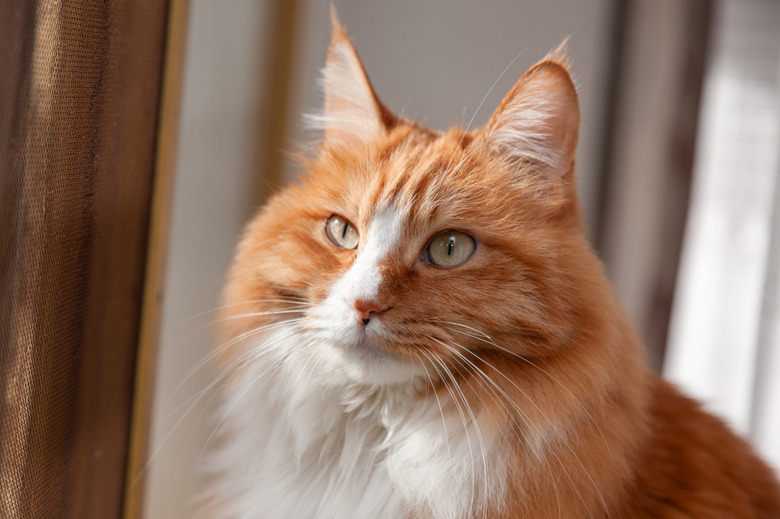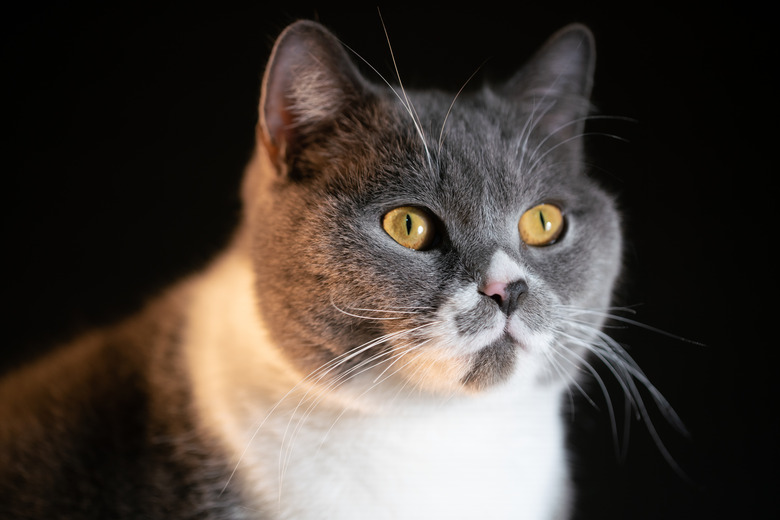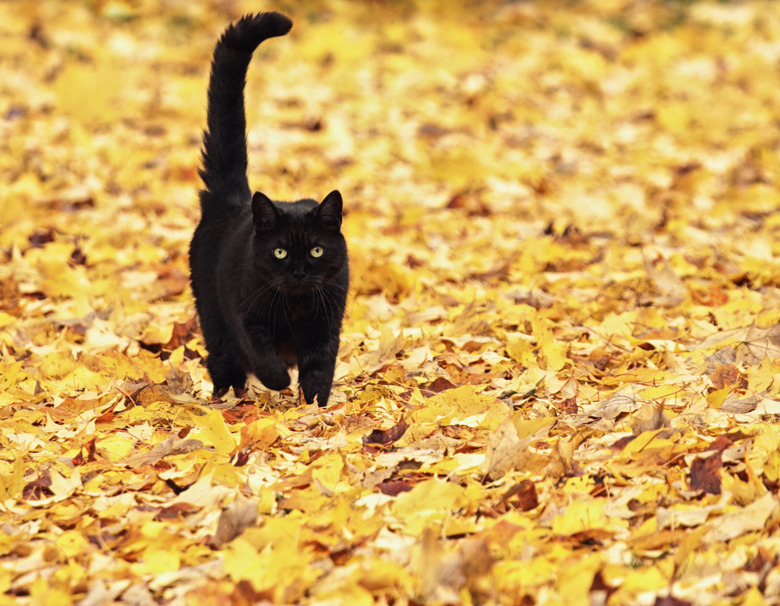Want To Bond With Your Cat? Try Slow Blinking — Here's How!
If you're a cat lover, you know that cats are not always the easiest animals to read or communicate with Although purring is usually a universal symbol of a happy cat, they don't always give you much else to go on. With dogs, you can usually tell what they're thinking just by looking at them. In fact, just looking their way usually sets their tails to wagging! However, there is a simple and effective way to communicate with your cat that you might not have known about: the slow blink.
First, some cat slow blink basics
First, some cat slow blink basics
The slow blink is a form of nonverbal communication that cats use to convey a sense of relaxation and trust. Have you ever been looking at your cat and seen them slow blink at you? Try slow blinking back to them. It involves slowly closing and opening your both your eyes, almost as if you were winking at your cat, but you do it with both eyes at the same time. If your cat gets the message, the slow blink can help to establish a bond with your cat and let your cat know you are saying "I love you" in a way they can understand.
Why does a slow blink work with cats?
Why does a slow blink work with cats?
So why does the slow blink work? According to experts who researched the topic, which was published in October 2020 in the journal Nature called "The Role of Cat Eye Narrowing Movements in Cat–human Communication," slow blinking is a type of body language that cats can understand. The study's researchers say that the eyes are important tools for conveying emotions, and narrowing the eyes (blinking) "appears to be associated with positive emotional communication in a range of species." So next time you're in the wild and are face to face with another species, give it a try! Well that might not work, but with cats it's definitely a thing.
The lead authors of the study, Tasmin Humphrey and Karen McComb (both of the University of Sussex), explained that the cat behavior of the slow blink could possibly be associated with positive emotions in cats because humans perceive slow blinking as positive. That theory is that cats evolved to like the slow blink because we as humans reward them for slow blinking with some positive attention. Another theory is that the slow blink is how cats interrupt unflinching, direct eye contact, which could come across as potentially threatening.
What is the cat slow blink?
What is the cat slow blink?
In the first experiment, cat eye movements were studied as the pet parent performed the slow blink once the cat gave direct eye contact. Cats in the study slow blinked more often when their pet parent slow blinked. In the second experiment, the experimenter was an unfamiliar person to the cats. the experimenter first approach the cat with an open hand and possibly calling the cat's name to get their attention. After a few seconds, the experimenter moved her hand away and either adopted a neutral expression without eye contact or began performing the slow blinking stimulus. Turns out, the cats approached the experimenter more frequently after the experimenter had slow-blinked first. The researchers summarize their cat slow blinking study by saying "our results suggest that slow blink sequences may function as a form of positive emotional communication between cats and humans."
Positive emotional communication between cats and humans! So it sounds like when a cat blinks slowly at you, they are essentially saying, "I trust you enough to close my eyes around you." By returning the slow blink, you are showing your cat that you trust them as well, which can help to strengthen your bond.
Do cats slow-blink at each other? Yes! There is evidence that cats slow-blink at each other to let other cats know that everything is fine.
How to do the cat slow blink
How to do the cat slow blink
This new study says slow blink sequences are not just a one-and-done blink. Instead, try a series of half-blinks followed by narrowing your eyes and leaving them narrowed, or closing your eyes. To use the slow blink technique with your best friend, start by making eye contact with them. Either get down on their level or try it when you notice them looking at you from across the room. Then, slowly and deliberately close your eyes for a few seconds before opening them again. Repeat this a few times to really get your cat's attention. If your cat responds by blinking back at you or by relaxing their body language, you know that the slow blink is working its magic.
Does slow blinking work with all cats?
Does slow blinking work with all cats?
No, we really can't say that slow blinking works with all cats. Like people, cats have their own unique personalities and preferences, and what works for one cat may not work for another. However, many cat parents have reported success with the slow blink, and it's definitely worth giving it a try if you want to strengthen your bond with your feline friend.
If you have a skittish or anxious cat, try the slow blink to let them know that everything is okay. Try to have everyone in your household using the slow blink, and see if that makes your cat feel more comfortable with other people.
Other types of cat communication
Other types of cat communication
An important aspect of communication with cats is understanding their body language. Cats use a variety of signals and facial expressions to convey their emotions, from the position of their ears to the way they hold their tail. By learning to read your cat's body language, you can better understand what they are feeling and respond accordingly.
Here are some cat communication cues to look for.
Cat tail signals:
- Meaning of a cat tail straight up: A tail sticking straight up means your cat is happy, If they are also rubbing against your leg, they might like attention
- Meaning of a fluffed up cat tail: This always means your cat is defensive and upset.
- Meaning of a flicking or swishing cat tail: Flicking means your cat is upset, while swishing means your cat is very upset. These tail positions are likely also to be accompanied by hissing and growling.
- Meaning of an arched back and tail down: When a cat has an arched back, it's scared and trying to make itself look bigger. This will happen in a threatening situation, but when your cat archers its back when you are petting it or when it is stretching, that is just your cat's flexible spine showing itself.
Cat ear signals:
- Meaning of ears flattened back: When a cat's ears are flattened back it is a sign that your cat is scared, upset, angry, or defensive
- Meaning of cat ears moving forward: This most likely means your cat is pinpointing a sound that is in front of them.
- Meaning of cat ears pointed upwards or forward: This most likely means your cat is relaxed and happy or curious about the environment.
- Meaning of ears moving around: It could be a sign of agitation, too much noice in the environment, or that your cat is trying to pinpoint sounds around them.
Of course, you probably already know that hearing your cat purr, rubbing up against you, or letting you rub their tummy are signs of a happy cat!
Another important thing to keep in mind is that cats don't respond well to aggression or punishment. If your cat is misbehaving or doing something you don't like, try redirecting their attention with a toy or treat rather than scolding them. Positive ways to reinforce behavior are always more effective than negative reinforcement when it comes to cats and dogs.
The bottom line
The bottom line
If you're a cat lover trying to strengthen your bond with your furry friend, the slow blink is a simple yet powerful technique that might help. When you see your cat blink slowly, blink slowly back. By using this form of nonverbal communication, you can convey a sense of relaxation and show a sign of trust to your cat, which can help to establish a deeper connection between you.
